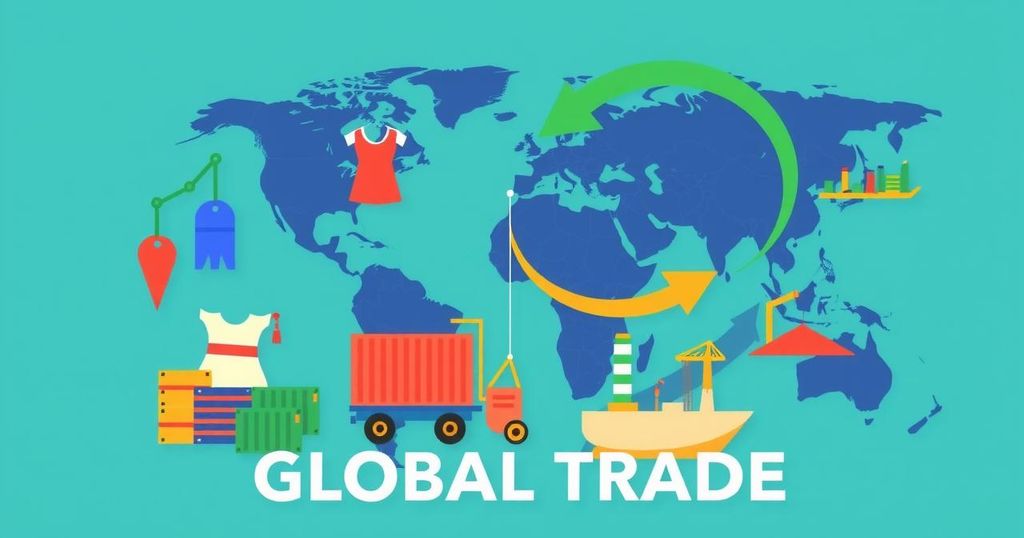India’s Response to U.S. Reciprocal Tariffs: Trade Talks Underway as Deadline Approaches

As the April 2 deadline nears, President Trump plans reciprocal tariffs for all countries, aiming to boost U.S. manufacturing and protect the economy. Tariffs could impact India significantly, as both nations initiate sectoral talks to enhance trade while aiming for an agreement by 2025. Concerns over market stability and recession fears are rising amidst these strategies.
As the April 2 deadline approaches, U.S. President Donald Trump has announced a strategy of reciprocal tariffs that he plans to implement across all nations, rather than just a select few. He indicated to reporters that discussions of only targeting 10 to 15 countries are unfounded, stating, “You’d start with all countries, so let’s see what happens.” This move is part of a broader plan to enhance U.S. manufacturing and fund domestic priorities.
The White House’s economic adviser, Kevin Hassett, hinted at targeting 10 to 15 countries with significant trade imbalances, though specifics were not provided. The administration has yet to disclose detailed plans regarding which countries will face tariffs and how exemptions can be secured. President Trump also mentioned that tariffs would factor in non-tariff barriers, yet the methodology for these calculations remains unclear.
Concerns arise as the prospect of a trade war looms, affecting market stability and raising fears of a U.S. recession. Despite viewing tariffs as protective measures against unfair trade, Trump’s approach may not yield beneficial outcomes for the global economy. UK Secretary of State for Home Affairs, Yvette Cooper, cautioned against increasing trade barriers, emphasizing that such actions could be detrimental to all nations involved.
In response to the potential impact of these tariffs, both India and the U.S. have agreed to commence sectoral talks under a new bilateral trade agreement (BTA). Following four days of negotiations, the countries plan to initiate virtual meetings to enhance cooperation in critical sectors. The goal is to finalize the first phase of this agreement by fall 2025 and to more than double bilateral trade from USD 190 billion to USD 500 billion by 2030.
The U.S. has proposed concessions in industrial goods, automobiles, and agriculture sectors, while India is expected to seek duty reductions for labor-intensive industries like textiles. With the U.S. being India’s largest trading partner, Indian industries are anxious about the repercussions of reciprocal tariffs and have called for exemptions to mitigate their impact.
In 2024, notable U.S. agricultural exports to India included almonds and ethanol, while India’s exports to the U.S. primarily comprised pharmaceuticals and textiles. In the context of trade dynamics, the U.S.-India trade relationship has seen substantial figures, with a bilateral trade volume of USD 119.71 billion recorded in 2023-24.
As the April 2 deadline for reciprocal tariffs draws near, the U.S. and India are in discussions to mitigate the potential impact on their trade. While Trump aims to enforce a broad tariff strategy, the specifics and implications for various sectors remain under review. The outcome of these negotiations will significantly shape the bilateral trade landscape and the economic health of both nations amidst growing trade tensions.
Original Source: www.livemint.com







